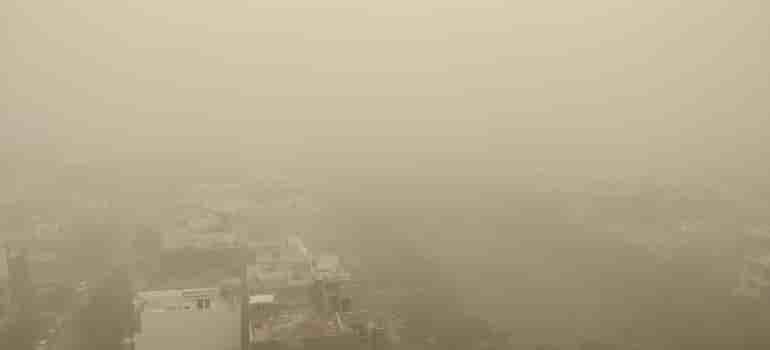
The massive spike in noxious air in the national capital and its surroundings is not entirely from stubble burning in adjoining states but also owes its genesis to predominant local pollution sources, and is compounded by unfavourable meteorology of the city, according to experts.
As per the data from the System of Air Quality and Weather Forecasting and Research (SAFAR), stubble burning is currently contributing only one per cent to the pollution in Delhi, as against 3 per cent on Tuesday. So, where is the rest of the pollution coming from?
According to SAFAR, which comes under the aegis of the Ministry of Earth Sciences, 357 stubble burning fires were observed around Haryana, Punjab, and neighbouring border regions on October 13, but the transport wind direction is not favourable and hence, only minimal contribution to pollution from the stubble burning is expected.
The political blame game has, however, already begun between the Centre, Delhi and governments of adjoining states as to how much crop burning adds to the menace versus local factors like construction dust.
A recent study conducted by the IIT-Kanpur and the Delhi Pollution Control Board, found out that 38 per cent of the particulate matter with the diameter of 2.5 micrograms per cubic metre, which is too small to be filtered out of the body, comes from road dust, 20 per cent from vehicular emission, 11 per cent from industries etc.
According to Kurinji Selvaraj, Research Analyst at the Council on Energy, Environment and Water (CEEW), high pollution in Delhi is primarily from these local sources and unfavourable meteorological conditions like wind speed.
Hemant Kaushal, Project Coordinator at IIT Delhi’s Centre of Excellence for Research on Clear Air, reiterated the same, telling IANS that the rise in pollution is not entirely due to stubble burning, but local pollution sources such as construction and demolition, industrial emissions, power plant emissions etc.
“Crops burning merely adds on to the current load,” he added. Moreover, the wind direction and ecological conditions are also unfavourable to Delhi in October and November due to slow wind speed.
“Besides this, as the winter sets in, the entire pollution tends to settle down on the ground because air becomes dense and more compounded. In summers, however, the atmosphere becomes thinner and the pollution disperses,” he added.
Air pollution peaks in Delhi and surrounding regions every winter, when pollution from stubble burning combines with the suspended water droplets in the lower atmosphere to form a thick blanket of noxious smog, thus creating health hazards.
Kuldeep Srivastva, Head of IMD’s Regional Weather Forecasting Centre, said: “The wind speed will remain below 10 kilometre per hour till October 20. In evening and morning, there will be no dispersion. The wind speed will likely go up to 10 kilometre per hour during the day and still there will not be much dispersion of pollutants.”
In summer, there is rainfall and thunderstorm activities due to which the wind speed touches 50-60 km per hour, leading to dispersal of pollutants. However, in October and November, the wind speed does not go beyond 15 km per hour due to which the pollutants settle in.
Besides this, the CEEW also stated that low wind speed is unfavourable for pollutant dispersion and could be a factor leading to high presence of particulate matter with the diameter of 2.5 micrograms per cubic metre of air.
The city’s 24-hour average air quality index (AQI) stood at 276, which falls in the ‘poor’ category. SAFAR categorises air quality in the 0-50 range as good, 51-100 as satisfactory, 101-200 as moderate, 201-300 as poor, 301-400 as very poor and above 400 as severe.
Source: IANS


